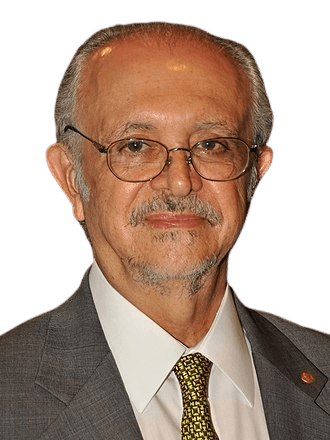Life and achievements
Early life
Mario Molina was born to a wealthy and academic family on March 19, 1943, in Mexico City, Mexico. His father was a lawyer and diplomat, while his mother was a homemaker. Unlike other families that had laid down career patterns that a child was expected to follow, Molina had developed an interest in science from childhood. In childhood, he turned the bathroom into a laboratory where he used toy microscopes and chemistry sets to conduct experiments. Being a professional chemist, his aunt Esther Molina insisted on his desire and helped him to progress to more complex experiments.
When Molina was 11, he started attending a boarding school in Switzerland and learned German there. He did like the idea at first but changed his mind when he got into class and saw that his classmates were not as enthusiastic about science as he was. However, studying at the University in England was vital for him as it helped him to become a chemist. After returning to Mexico, he attended the National Autonomous University of Mexico (UNAM), where he took a chemical engineering course that was flexible enough to follow his passion for physical chemistry.
Molina's academic adventure led him to Germany, where he researched polymerization kinetics at the University of Freiburg. But then he discovered he was more interested in atmospheric chemistry, so he headed to the United States. He received his Ph.D. in physical chemistry from the University of California at Berkeley in 1972 under the supervision of George Pimentel. For this reason, Molina's early academic experiences can be regarded as the background for his subsequent work in environmental chemistry and his groundbreaking investigations of the depletion of the ozone layer.
Legacy
Mario Molina's work and achievements are best remembered through his work in destroying the ozone layer and as an environmentalist. His work not only contributed to the enhancement of scientific knowledge in the field of atmospheric chemistry but also made a peculiar contribution to the development of global environmental policy. Molina's scientific work with Sherwood Rowland explained that CFCs, used in such products as refrigerators and aerosol sprays, destroy the ozone layer, which helps shield life on the Earth from dangerous ultraviolet radiation. They were found, and this led to the signing of the 1987 Montreal Protocol, an agreement that aimed at eliminating the use of CFCs and other ozone-depleting substances.
Molina's work is much more than his Nobel Prize-winning research on chemical reactions and atmospheric gases. In his career, he was always on record, especially in supporting the formulation of environmental policy based on science. He devoted much time to explaining the risks of ozone depletion to the community and political leadership because he knew that citizens and governments had an essential role in tackling global environmental issues. His efforts made a paradigm shift and created a global opinion on how best to cooperate to safeguard the environment, not only on topics such as climate change.
Molina's contribution to environmental science and policy persisted in the 21st century. He was in the climate change research team, where he specialized in air quality and the effects of urbanization on the environment. This was evident in his endeavors in Mexico City, where he contributed to measures for combating airborne pollution. Molina was also active in climate change talks and underlined the need to act quickly to tackle climate change. He has made significant contributions to science and policy, shaping the world and influencing generations of scientists and environmentalists.
Milestone moments
Jan 17, 1974
A paper on CFC-Ozone Depletion Theory was published in Nature magazine.
In 1974, Molina and Rowland published a paper in Nature magazine showing how CFCs were destroying the ozone layer.
This paper is important because, for the first time, scientists attributed the depletion of the ozone layer to human activities, which brought it into the international spotlight.
Some of the discoveries would later lead to regulatory measures, some of which included the signing of the Montreal Protocol in 1987 to check on the use of CFCs.
Mar 14, 1985
The Discovery of the Antarctic Ozone Hole
Subsequently, in 1985, British scientists found a hole in the ozone layer above Antarctica, supporting Molina and Rowland's idea.
This discovery was quite startling for the international scientific community and launched debates on the threats posed by CFCs.
This evidence of the ozone hole caused the international community to look for a solution, resulting in the Montreal Protocol two years later.
Apr 24, 1987
The signing of the Montreal Protocol.
The Montreal Protocol, signed in 1987, was an immediate reaction to Molina, Rowland, and Crutzen's discoveries.
Hailed as the first international treaty to address a global environmental concern, the Convention on the Elimination of Chemicals and Other Substances was signed by 197 countries.
This is one of the most successful environmental treaties, and the ozone layer should be restored by the mid-century.
Sep 25, 1995
Nobel Prize in Chemistry
Molina, Rowland, and Crutzen were awarded the Nobel Prize in Chemistry in 1995 for their work in atmospheric chemistry.
The Nobel Committee appreciated their contributions to ozone depletion, pointing out the significance of their work for the formation of international environmental policy.
Molina made Latin America highlight environmental science after becoming the first Mexican-born scientist awarded the Nobel Prize in Chemistry.
